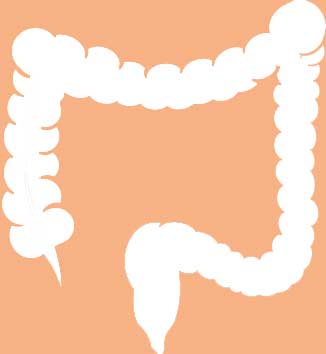FIT (Faecal Immunochemical Test) is a stool test designed to identify possible signs of bowel disease. It detects minute amounts of blood in faeces (faecal occult blood). Many bowel abnormalities which may develop into cancer over time, are more likely to bleed than normal tissue. So, if there is blood in the stool this can indicate the presence of abnormalities in the bowel. Patients with a positive FIT result are referred for further investigation by colonoscopy. If cancer is found early, treatments are more effective.
- [email protected]
- +44 (0) 23 8048 3000
About Faecal Immunochemical Testing

What is a FIT?
FIT is More Sensitive and Specific
Since FIT uses specific antibodies to detect human blood in the stool it is more definitive for colorectal cancer indication than other types of stool tests such as the qualitative guaiac faecal occult blood test (gFOBT). Guaiac tests can result in a false positive result from other types of blood that may be in the digestive system as a result of diet (e.g. red meat). FIT is both more sensitive and specific than gFOBT.FIT Uses an Easy Sampling Device
FIT uses a simple faecal collection device that is more hygienic and acceptable to patients for collecting their stool specimen. It only requires one sample rather than the three required for gFOBT. These features combine to promote greater uptake in screening programmes. In addition, the collection device incorporates a preservative buffer that prevents haemoglobin degradation to provide a more accurate result.FIT for All
FIT is an effective diagnostic test for use in both screening and symptomatic assessment applications.
It is now used for asymptomatic population-based bowel (cancer) screening and also for the assessment of patients presenting with lower abdominal symptoms, particularly in primary care.
FIT provide one investigation that is of significant value in these two very different clinical settings. These applications have different target populations, aims, faecal haemoglobin cut-offs, interpretation of results, potential harms, additional benefits, potential improvements and possible strategies for the future.
It is important that these different aspects of FIT are appreciated as this test rolls out across the UK and the major advantages of increasing screening uptake and helping to decide which patients presenting in primary care would benefit most from colonoscopy are gained.
The following table clarifies the attributes:
Distinguishing FIT in Screening from FIT in Assessment of the Symptomatic |
||
| Characteristic | FIT in Screening | FIT in the Symptomatic |
Target Population |
Asymptomatic individuals eligible to participate in structured screening programmes, which differ from nation to nation in the UK along with those older individuals who choose to “opt-in”. | Patients of any age who present in primary care with lower abdominal symptoms such as rectal bleeding, a change in bowel habit to constipation or diarrhoea, unexplained weight loss, anaemia, abdominal pain, and abdominal or rectal mass. In addition, some patients seen at certain secondary care clinics such as gastroenterology, will benefit. |
Aim |
To select those participants in screening programmes who have no symptoms, but are at highest risk of colorectal neoplasia – cancer and higher-risk (advanced) adenoma. | To identify those patients who are most unlikely to have significant colorectal disease and would not benefit from referral for colonoscopy, saving resources and shortening waiting times, as well as identifying those who have significant colorectal disease and would benefit. |
Purpose |
Rule in neoplasia. | Rule out significant colorectal disease (cancer + higher-risk adenoma + inflammatory bowel disease). Rule in significant colorectal disease. |
Faecal Haemoglobin Cut-off Concentration Used |
High – especially in colonoscopy constrained countries. Selected to give the screening programme performance characteristics desired, such as the positivity rate with which the available colonoscopy resource could cope. | Low – 10 µg Hb/g faeces is widely recommended – selected to ensure that patients with “negative” results, most unlikely to have significant colorectal disease, do not necessarily get early referral for colonoscopy. And, if “positive”, stimulates early referral to secondary care for further investigation. |
| Interpretation of Results |
A “positive” result means that a risk of significant colorectal disease is present and further investigation is warranted. A “negative” result means the participant should be invited again at the set screening interval. | If the result is “negative”, there is considerable reassurance that significant colorectal disease is not present. A “detectable” faecal haemoglobin means that the patient warrants further investigation. |
Potential Harms |
Not all colorectal neoplasia is detected – interval cancer proportions are high when high faecal haemoglobin cut-offs are applied. Thus, a “negative” result does not mean that colorectal neoplasia is absent and participants receive information on lifestyle and symptoms. There is a “reassurance” effect of a “negative” result. Moreover, a “positive” result does not mean that colorectal neoplasia is present, but the participant may undergo an invasive and potentially harmful investigation. | FIT in assessment of the symptomatic is not perfect and some colorectal disease will be missed if a “negative” result is used as guidance for no referral. Most cancers are detected, but a slightly greater proportion of higher-risk adenoma and inflammatory bowel diseases are not detected. Thus, patients with “negative” results could be given reassurance, but possible alternatives such as watching and waiting, referral to secondary care clinics, or a repeat FIT might be warranted, particularly if symptoms persist. |
Additional Benefits |
Not only cancer detected but also some higher-risk adenoma, sometimes precursors of cancer, and inflammatory bowel disease. | Not only possibility of significant colorectal disease being “excluded”, but cancer, higher-risk adenoma, sometimes precursors of cancer, and inflammatory bowel disease detected. |
Potential Improvements |
As FIT screening progresses and as the available colonoscopy resource expands, implementation of lower cut-offs over time would increase detection of cancer and even more higher-risk adenoma. | Investigation of more analytically sensitive methods for detection of faecal haemoglobin, since many patients have undetectable faecal haemoglobin with current methodology. Use of FIT result in combination with other variables such as blood haemoglobin. |
